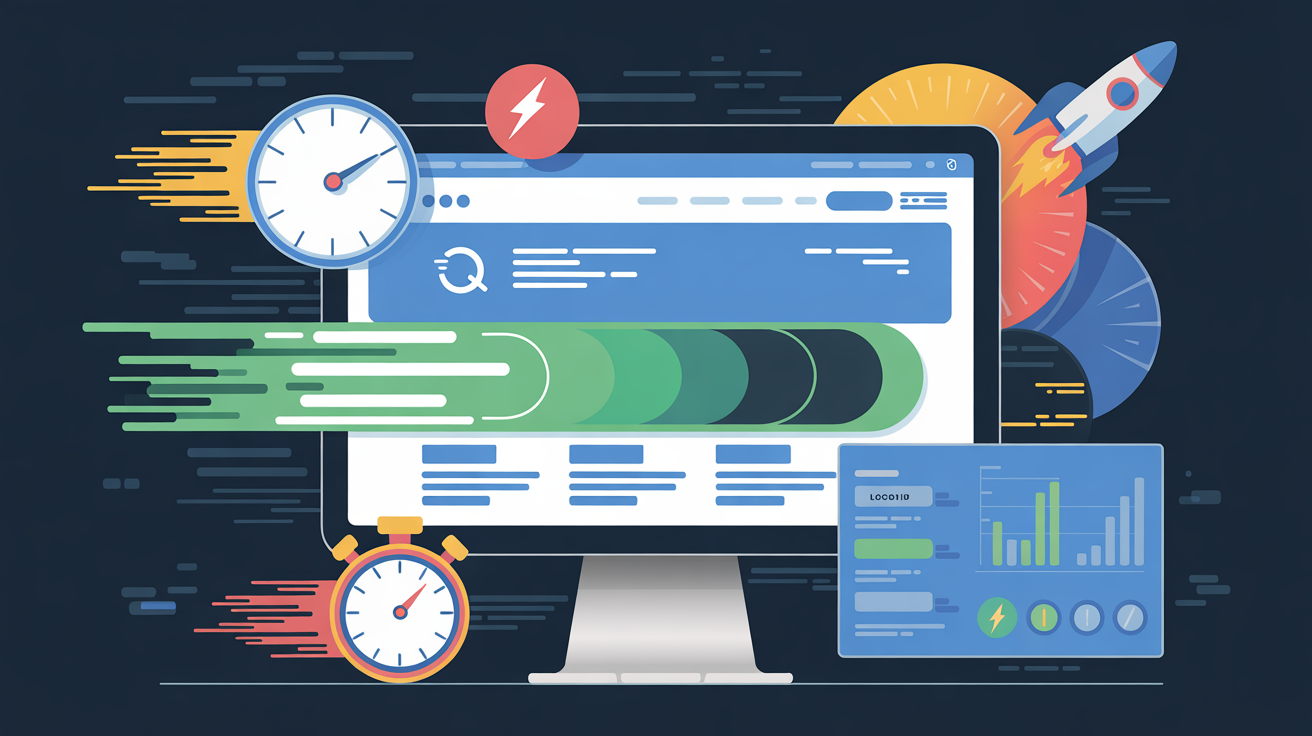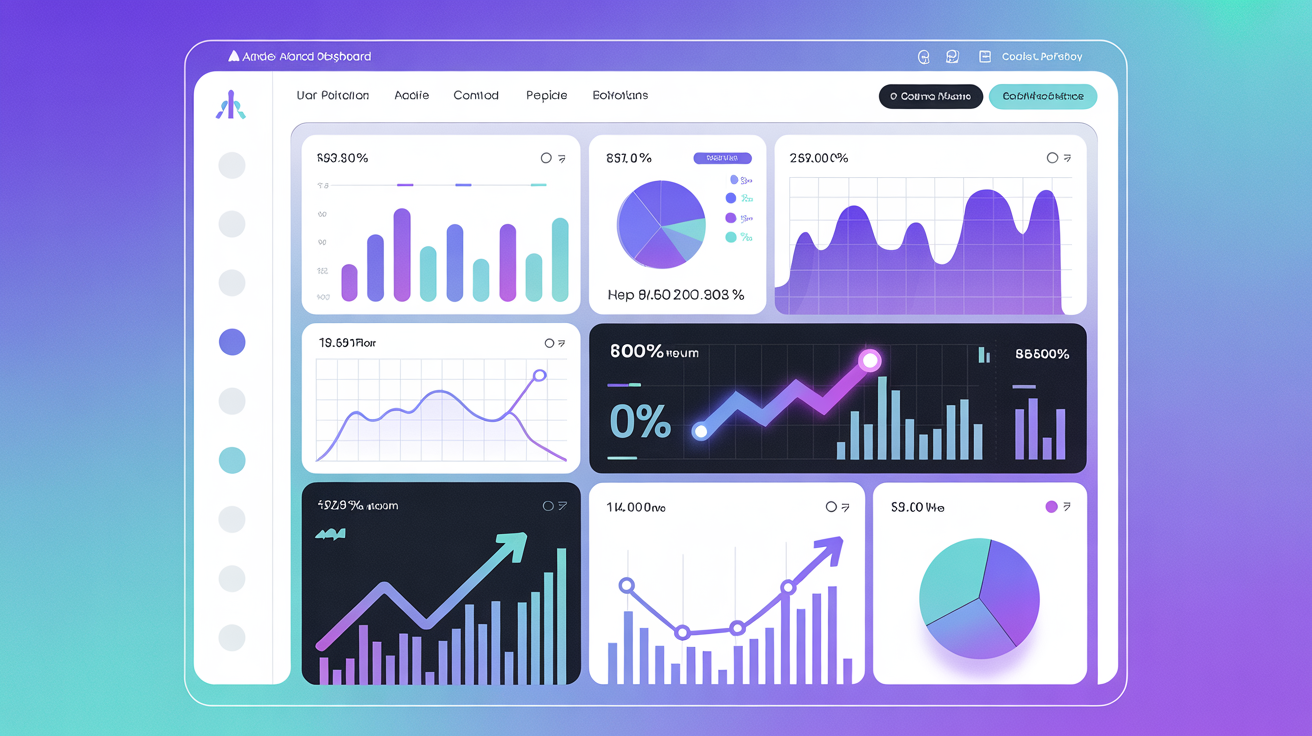In the fast-paced digital world, speed is everything. Studies show that 53% of mobile users abandon sites that take longer than 3 seconds to load. Every second of delay can cost you customers, conversions, and search engine rankings.
But here's the good news: optimizing your website speed is entirely achievable, and the benefits are immediate and measurable. This comprehensive guide will show you exactly how to make your site blazingly fast.
Why Website Speed Matters
Before diving into optimization techniques, let's understand why speed is so critical:
1. User Experience
- Fast sites keep visitors engaged – Users expect instant gratification
- Reduced bounce rates – Slow sites frustrate users who leave immediately
- Higher conversion rates – Amazon found that every 100ms delay costs them 1% in sales
2. SEO Rankings
- Page speed is a ranking factor – Google explicitly uses it in their algorithm
- Core Web Vitals – Google's metrics specifically measure user experience, including speed
- Mobile-first indexing – Mobile speed is especially important
3. Business Impact
- Increased revenue – Faster sites convert better
- Competitive advantage – Stand out from slower competitors
- Better brand perception – Speed reflects professionalism
Measuring Your Current Speed
Before optimizing, establish a baseline. Use these free tools:
Essential Testing Tools:
- Google PageSpeed Insights – Comprehensive analysis with specific recommendations
- GTmetrix – Detailed performance reports with waterfall charts
- WebPageTest – Advanced testing with multiple locations and devices
- Lighthouse – Built into Chrome DevTools
Key Metrics to Track:
- Largest Contentful Paint (LCP) – Should be under 2.5 seconds
- First Input Delay (FID) – Should be under 100 milliseconds
- Cumulative Layout Shift (CLS) – Should be under 0.1
- Total Page Size – Aim for under 1-2 MB
- Number of Requests – Fewer is better; target under 50
Image Optimization: The Biggest Win
Images are typically the largest contributor to page weight. Optimizing them can dramatically improve speed.
Image Optimization Strategies:
- Compress images – Use tools like TinyPNG or ImageOptim to reduce file size without visible quality loss
- Choose the right format – WebP for photos (90% of browsers support it), SVG for logos and icons
- Implement lazy loading – Load images only when they're about to enter the viewport
- Use responsive images – Serve appropriately sized images for different devices
- Set explicit dimensions – Prevents layout shift as images load
- Remove unnecessary metadata – EXIF data adds weight
Quick Wins:
- Never upload images larger than they'll display
- Aim for under 100KB per image when possible
- Use CSS for simple shapes instead of images
Minimize and Optimize Code
Bloated code slows everything down. Clean, efficient code loads faster.
CSS Optimization:
- Minify CSS – Remove unnecessary characters, whitespace, and comments
- Remove unused CSS – Many sites load CSS they don't use
- Inline critical CSS – Include above-the-fold styles directly in HTML
- Defer non-critical CSS – Load it after initial page render
JavaScript Optimization:
- Minify JavaScript – Reduce file size
- Defer or async load – Don't block page rendering
- Remove unused libraries – Don't load jQuery if you don't need it
- Use modern, lightweight alternatives – Smaller libraries perform better
HTML Optimization:
- Minify HTML – Remove extra spaces and comments
- Reduce DOM size – Fewer elements mean faster rendering
- Avoid inline styles – Use CSS classes instead
Leverage Browser Caching
Browser caching stores static files locally, so returning visitors don't need to download them again.
Caching Best Practices:
- Set appropriate cache expiration times – Longer for static assets, shorter for frequently updated content
- Use versioning – Change filenames when updating cached files
- Leverage service workers – For advanced caching strategies
Example Cache Headers:
- Images, CSS, JS: Cache for 1 year
- HTML pages: Cache for 1 hour or use validation
- API responses: Cache based on data update frequency
Use a Content Delivery Network (CDN)
CDNs distribute your content across multiple servers worldwide, serving files from locations closest to your users.
CDN Benefits:
- Reduced latency – Shorter distance = faster delivery
- Better reliability – Multiple servers mean redundancy
- Reduced server load – CDN handles static file delivery
- DDoS protection – Many CDNs include security features
Popular CDN Options:
- Cloudflare – Free tier available, easy setup
- AWS CloudFront – Powerful, scalable, pay-as-you-go
- Fastly – Real-time updates, advanced features
Choose Quality Hosting
Your hosting provider significantly impacts speed. Don't cheap out here.
What to Look For:
- SSD storage – Much faster than traditional hard drives
- Adequate resources – RAM, CPU, bandwidth appropriate for your traffic
- Server location – Choose locations close to your audience
- HTTP/2 or HTTP/3 support – Newer protocols are faster
- PHP 8+ support (for WordPress sites) – Significant performance improvements
Hosting Tiers:
- Shared hosting – Budget option, acceptable for low-traffic sites
- VPS – Better performance, more control
- Dedicated servers – Full control, highest performance
- Managed hosting – Performance optimization handled for you (Gizseo's approach)
Reduce HTTP Requests
Every file your page loads requires a separate HTTP request. Fewer requests = faster loading.
Reduction Strategies:
- Combine files – Merge multiple CSS or JS files when possible
- Use CSS sprites – Combine multiple small images into one
- Inline small resources – For very small files, embed directly in HTML
- Remove unnecessary plugins – Each adds its own assets
- Limit third-party scripts – Every tracking or chat widget adds requests
Enable Gzip Compression
Compression reduces file sizes by up to 70% before sending them to browsers.
What to Compress:
- HTML files
- CSS files
- JavaScript files
- JSON and XML
What NOT to Compress:
- Images – Already compressed
- Videos – Already compressed
- PDFs – May already be compressed
Optimize Database Performance
For dynamic sites (like WordPress), database optimization is crucial.
Database Optimization Tips:
- Regular cleanup – Delete spam comments, post revisions, transients
- Optimize tables – Use database optimization tools
- Add proper indexes – Speed up common queries
- Limit post revisions – Don't keep unlimited old versions
- Use object caching – Redis or Memcached for frequently accessed data
Implement Advanced Techniques
For those ready to go further:
1. Preload Critical Resources
Tell the browser to load important files immediately:
- Fonts
- Critical CSS
- Hero images
2. Use Resource Hints
- DNS prefetch – Resolve domain names early
- Preconnect – Establish connections to important origins
- Prefetch – Load resources that might be needed soon
3. Implement AMP (Accelerated Mobile Pages)
For content-focused sites, AMP provides extremely fast mobile experiences.
4. Server-Side Rendering (SSR)
For JavaScript-heavy applications, SSR can significantly improve initial load times.
Monitor and Maintain Speed
Speed optimization isn't one-and-done. Regular monitoring is essential.
Ongoing Maintenance:
- Monthly speed tests – Check performance regularly
- Review new content – Ensure new images are optimized
- Update plugins and themes – Newer versions often include performance improvements
- Monitor third-party scripts – They can slow down over time
- Test after major changes – Ensure updates don't hurt performance
Set Up Performance Budgets:
- Maximum page weight: 1.5 MB
- Maximum requests: 50
- LCP target: Under 2 seconds
Common Speed Killers to Avoid
- Too many plugins (WordPress) – Each adds overhead
- Unoptimized images – The #1 speed killer
- Poor hosting – Foundation matters
- Render-blocking resources – CSS and JS that delay rendering
- No caching – Every visit shouldn't require full page generation
- Excessive redirects – Each adds latency
- External embeds – Videos, social feeds, etc. can be slow
The Bottom Line
Website speed optimization is a journey, not a destination. Start with the biggest impact items (images, hosting, caching) and progressively enhance from there.
Quick Start Checklist:
- ☐ Test current speed and establish baseline
- ☐ Optimize and compress all images
- ☐ Enable caching
- ☐ Minify CSS, JavaScript, and HTML
- ☐ Evaluate and upgrade hosting if needed
- ☐ Implement a CDN
- ☐ Enable Gzip compression
- ☐ Reduce HTTP requests
- ☐ Test again and track improvements
- ☐ Set up ongoing monitoring
Need Professional Help?
Speed optimization can be technical and time-consuming. At Gizseo, we build speed into every website from the ground up and include ongoing performance optimization in our maintenance plans.
Our sites consistently score 90+ on Google PageSpeed Insights because we implement all these best practices automatically.
Want a fast website without the hassle? Contact us for a free consultation and learn how we can help your site load in under 3 seconds.


